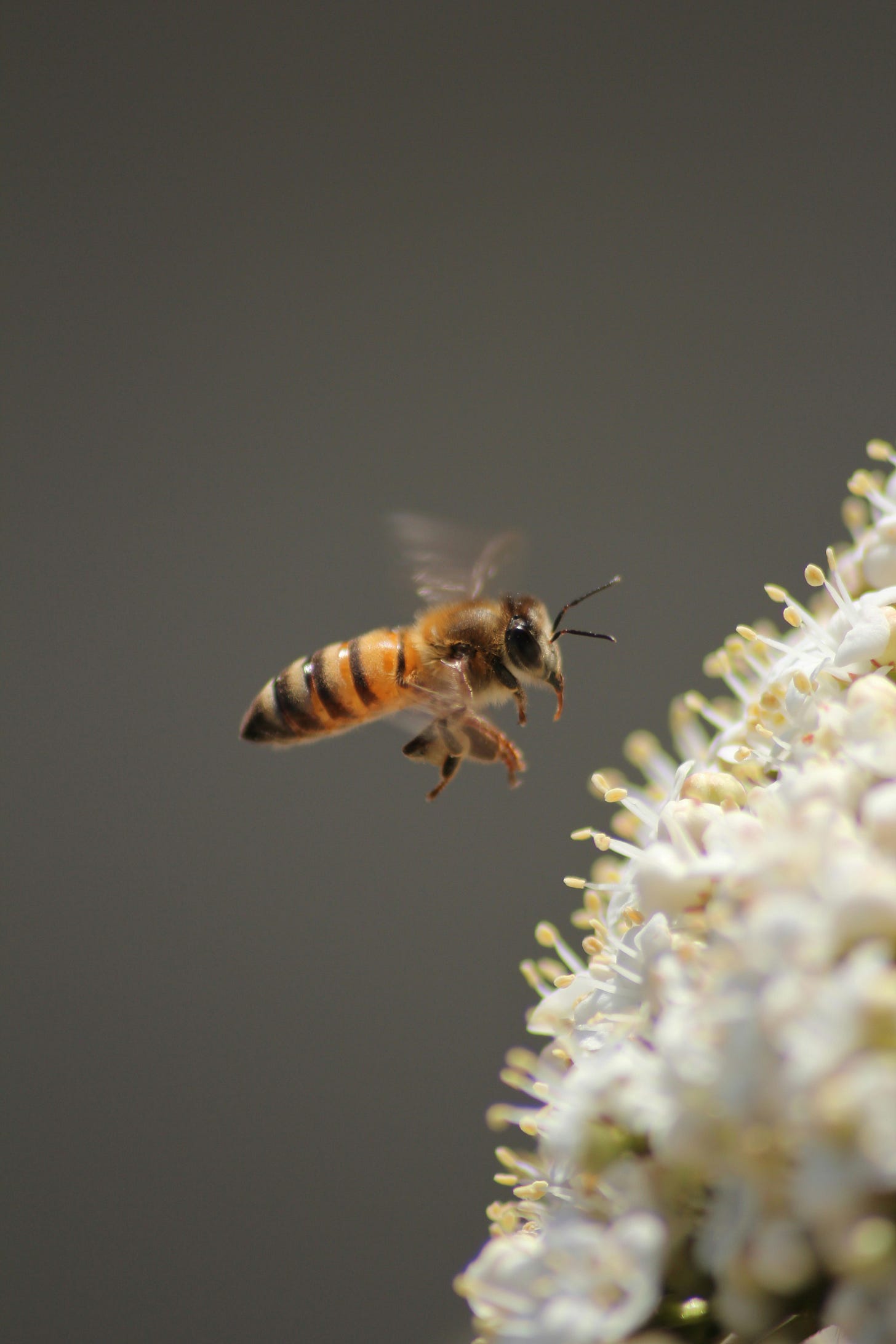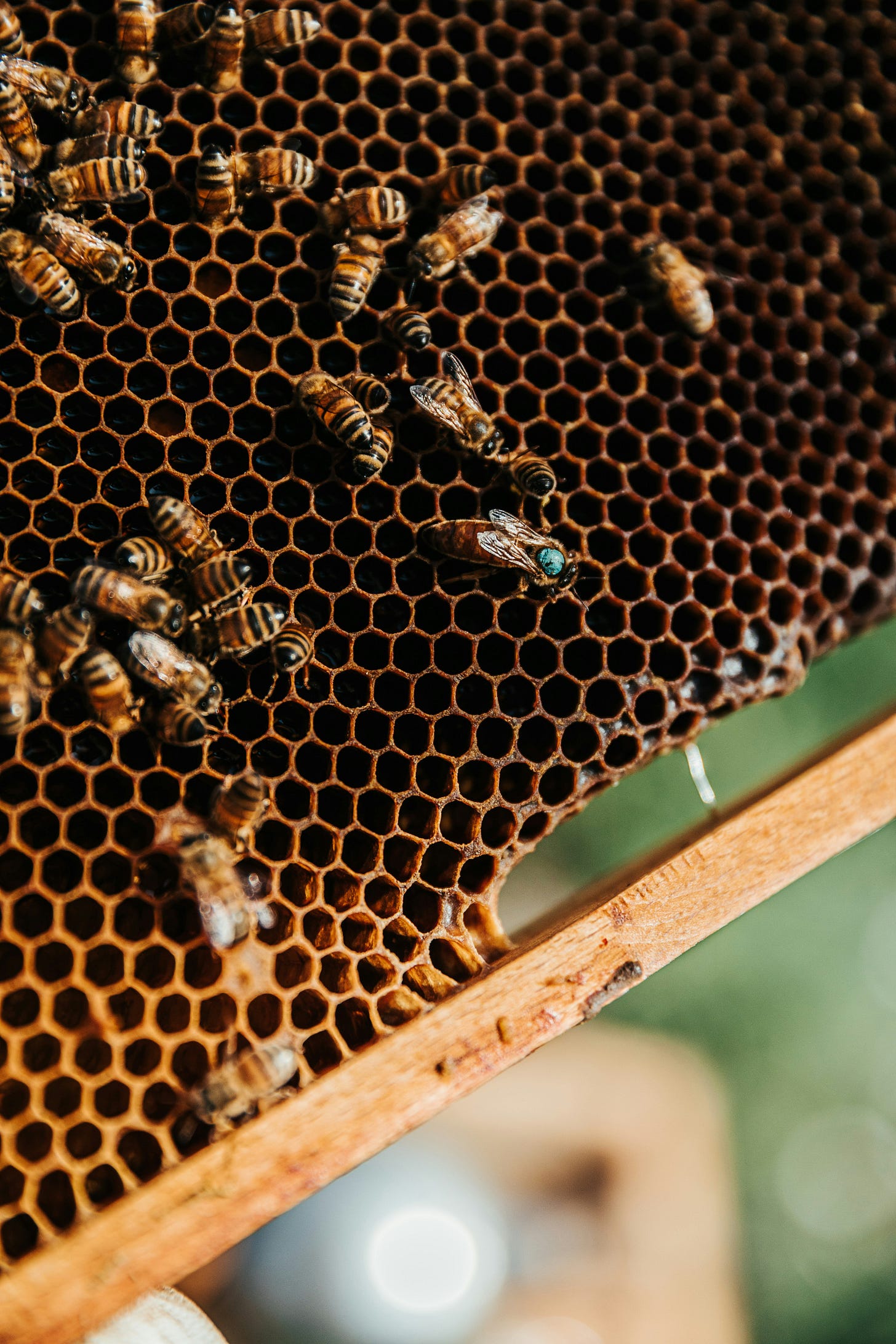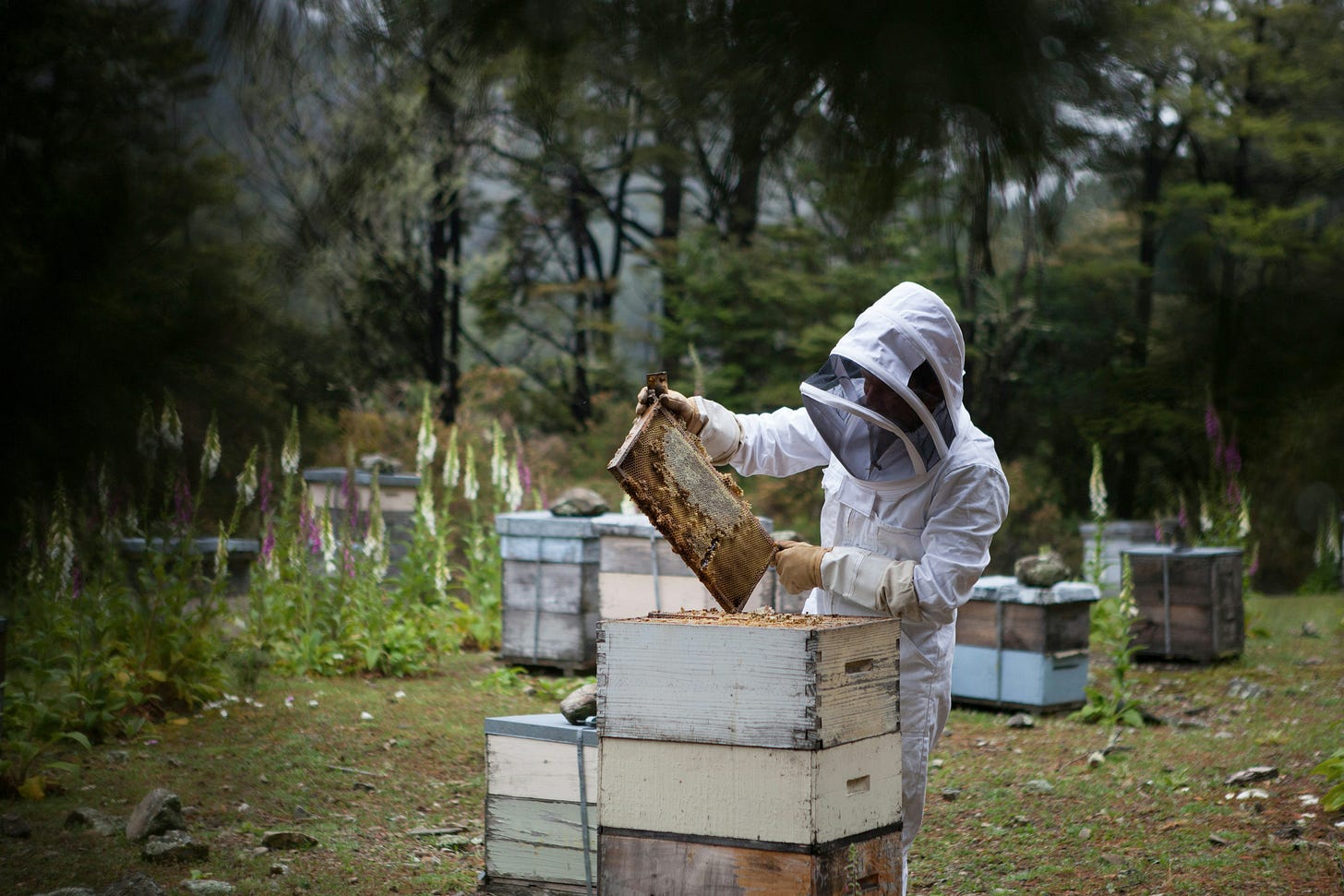
Bees have existed in the wild for 100 million years, while we humans have only been around for a scant ten thousand. For as long as we've existed as humans, we've co-existed with bees. Yet despite this, there is a big difference between how bees live in wild colonies, versus how human apiarists treat them or keep them in man-made hives.
In "The Lives Of Bees", Dr. Thomas Seely outlines decades of research, experiments, bee hunting, and comparison to show how bees live when left on their own, and what we can learn from that to keep better hives ourselves.
Bees: Only Semi-Domesticated
Seely argues that unlike other animals such as dogs, goats, horses, and so on, bees are only 'semi' domesticated. While humans have done a lot of work breeding different lines of other animals to benefit us - dogs that hunt, horses that are good at work, etc. - with bees we have been able to control their living environment, but we haven't been able to control their genetic lines or breeding. And Seely argues - that's a good thing.
With bees the main organism is the collective hive itself, rather than the individual bee. To reproduce, bee colonies 'swarm' when they are doing well - splitting off half of the bees into a new hive, with a mated queen and half of the honey stores. Seely shows how this swarming behaviour is healthy and beneficial. It reduces parasites and disease; it ensures that the best, fittest genetic lines continue; and it helps bees to survive and adapt to their environment.
Bee Life Cycle And Behaviour

The bulk of Seely's book walks through the ecology, behaviour, and yearly cycle of bees - how they collect food, how they defend their hive, how they swarm and reproduce. It is fascinating. At each step Seely shows multiple experiments he and other researchers have conducted to learn how bees behave in the wild.
Do bees nest up high or down low? Do they live in hives with big entrances or small entrances? Over decades Seely conducts many experiments to find out. "The nest is a survival tool that extends beyond the bees' own bodies".
The Thrill Of 'Bee Hunting' - Finding A Hive
Seely also describes the fascinating craft of "bee hunting" - how to peacefully locate a hive by following the worker bees. He walks through the steps of finding bees in a flower patch on a nice, sunny day; luring them with delicious sugar water; and then marking worker bees with water-based paint. You can watch which direction they depart, and time how long it takes them to return - this gives you a distance and direction for the location of the hive. Seely has even kindly published and shared videos online to show the practice of locating hives in this way. What a fun way to spend a sunny afternoon.
Clear, Passionate, And Well Organized

The book's style is easy to read, gripping, and engaging. It is clear to see the passion and enthusiasm Seely has during his lifetime of working with bees. The chapters are also well woven together - each chapter will explain "we will first talk about X topic, and here is how that fits in with the rest of the work. These themes will make the next few chapters more unified and make more sense".
I Learned A Lot
The book contains a wealth of information about bees and their behaviour
Bees stay alert during the winter time, and generate heat inside their hive to stay alive. They may keep the internal hive temperature as hot as 95 F / 35 C, even when it is cold and snowy! Staying alert during the winter may be unique across all insects
Hives may split and 'swarm' zero to three times per year to create new nests, depending on how well the colony is doing, and how much forage food is growing nearby
Building hexagon-shaped bee comb only requires 52% of the wax compared to building circular cells. It’s one of the most efficient shapes. Now that's good economy!
Humans have learned a lot in the past few hundred years that we have been keeping honeybees in hives with 'bee space', but we still have a lot to learn.
The Images Are Great

Throughout the book Seely includes high quality pictures that do a wonderful job of illustrating the concepts he is talking about. From bees 'bearding' when swarming or escaping the heat, to collecting pollen, all of them were very informative. The tables and charts from his experiment results were also easy to follow and showed interesting results. It's a skilled and economical use of pictures.
Noting The Differences
The final chapter is the result summary. Seely walks through the differences between most wild hives in his forested area versus the common practice for human apiaries. Many of the differences are striking. For example - in the wild colonies often choose nests in thick tree trucks with 5 to 10 inches of wood (12 to 25 cm). These nests give the bees great insulation during cold weather - so much so that hives can stay active and eat honey stores inside their nest even when outside temperatures are -4F / -20C . In contrast, standard thin wooden frame beehives used in most apiaries lose so much heat that bees must begin clustering just to stay warm and survive when outside temperatures drop below 50 F / 10 C. Quite a difference!
As you can imagine - hives that are stressed from the cold and have to spend much of their energy and honey stores so early have lower winter survival rates than hives that have good insulation and access to all of their honey.
Rules For Good Beekeeping

A few of Seely's rules for healthy beekeeping are below:
Work with bees that are adapted to your location. You can set up 'bait hives' to capture local swarms and give them a place to live.
Space your hives as widely as possible. At least 50 meters/ 160 feet apart, but ideally 800 meters / half a mile in the wild. This helps a lot to reduce disease and theft of honey. Hives will be stronger and survive more winters.
House your colonies in small hives. The average size desired by wild bees is 40 litres / 10 gallons. In contrast most commercial hives use a space at least double this size, in an attempt to reduce swarming.
Roughen the inner wall surfaces, or build them from rough sawn lumber. This stimulates the bees to cover the walls in propolis, so they are protected from disease and parasites. May also help them to conserve water and heat in the winter.
Use hive walls with good insulation. In areas with cold winters, aim for R8. This means 15cm / 5" of wood.
Position hives high off the ground. Helps the nest to avoid notice by predators (e.g. bears). Also makes it easier for bees to get in and out without flying near snow. Cold bees lose the ability to fly, and die.
Use one small, high entrance. Bees seem to like a space 20 square cm / 7 square inches. May make it easier to defend, and keep the hive warmer in the winter.
Face the hive south. Gives the bees a nice warm microclimate, helps them warm up and fly sooner.
Minimize nest disruptions + moves. Put frames back in the same position and orientation. Don't open them too frequently, e.g. once per week. Don't insert empty frames to stop swarming. Some apiarists try to only open the hive once per year for honey harvest.
Stay as far as possible from insecticides and fungicides
Locate colonies where they are surrounded by natural areas - wetlands, forrests, abandoned fields, moors. You want clean water and diverse pollen sources
Minimize pollen trapping and honey harvesting. Don't rob the bees of all of their resources. They may need 20kg to 50kg / 40 to 100 pounds of honey to get through the winter.
Don't treat colonies for varroa mites or other pests. This lets them build up better immunity and defense through natural selection. Otherwise you may end up with only dead or diseased bees.
For more, read Seely's own article on the topic.
I learned a lot. It was gripping. I highly recommend this book.
Other Info
Video - making natural bee hives out of tree trunks. I would love to make one of these
ResearchGate - Seely has 180+ publications. He appears to be a prolific author.
In Seely's own words - Darwinian Beekeeping



